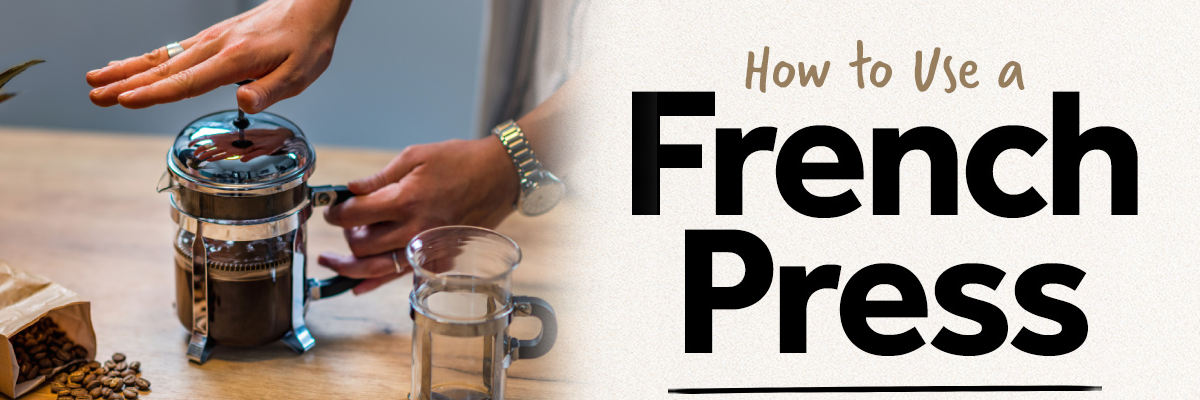The aroma of freshly brewed coffee on a calm morning is second to none. The French press, a classic immersion brewing method, is often heralded by coffee lovers for the flavorful, aromatic cups of coffee it produces. If you’ve ever pondered the question, “How do I use a French press?”, you’re in for a treat.
What Is a French Press and How Does it Work?
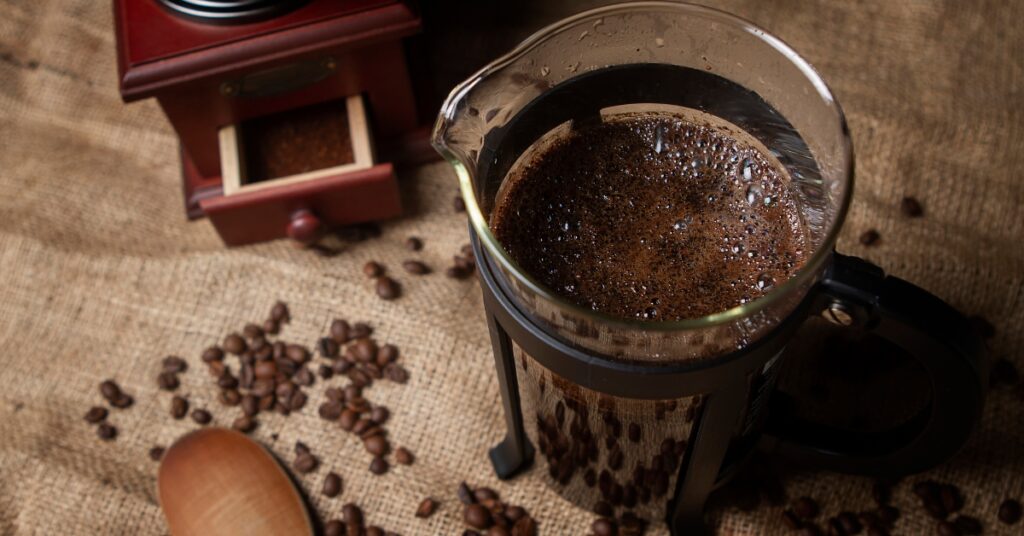
A French press is a coffee-making device that consists of several components, including a beaker, base, handle, and plunger, which makes it a simple and efficient method. The beaker is the container where ground beans and hot water are placed.
The base and handle of the French press are attached to prevent burns and protect surfaces. The lid of the beaker has filters and a plunger. When gently pushed down, the plunger pushes the coffee grounds to the bottom of the beaker, allowing brewed coffee to rise to the top.
The Essentials You Need
- French Press Coffee Maker: Often made with a cylindrical carafe and built-in filter, it’s the star of our show.
- Coffee Beans: Freshly roasted coffee beans, preferably dark roast, bring out the best flavors.
- Burr Grinder: Achieve the perfect grind, from medium to coarse, using this tool.
- Water: Ensure the water temperature is just right – not boiling, but hot.
- Measuring Tools:A gram scale for precise coffee-to-water ratio measurements.
Picking the Right Coffee
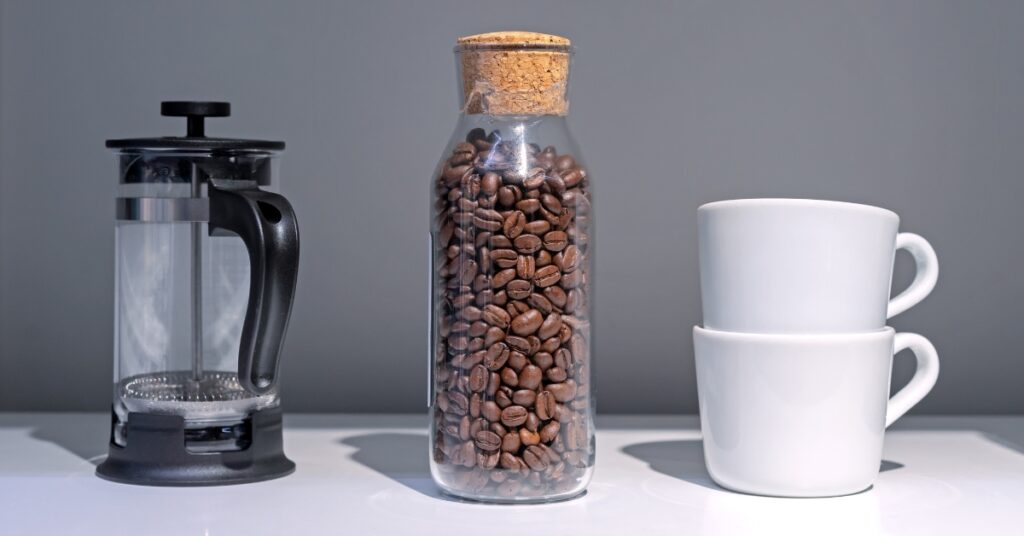
When considering beans, the rule of thumb is to select beans that are freshly roasted. Why? Fresh beans offer delicious aromas during brewing, which is part of the French Press Coffee charm.
The Grinding Process
A burr grinder is a coffee enthusiast’s best friend. You’re aiming for a coarse grind similar to breadcrumbs. Why not a medium grind or finely ground?
Coarser grinds prevent your coffee from turning bitter or gritty. Remember, the grind can make or break the flavor of your coffee.
Mastering the Coffee-to-Water Ratio
Aim for 1:15, coffee to water. This means for every gram of coffee, you’ll want 15 grams of water. A gram scale can be a handy tool here. But if you’re feeling confident, the general rule of thumb is 2 tablespoons of coffee for every 8 ounces of water.
The Brewing Process
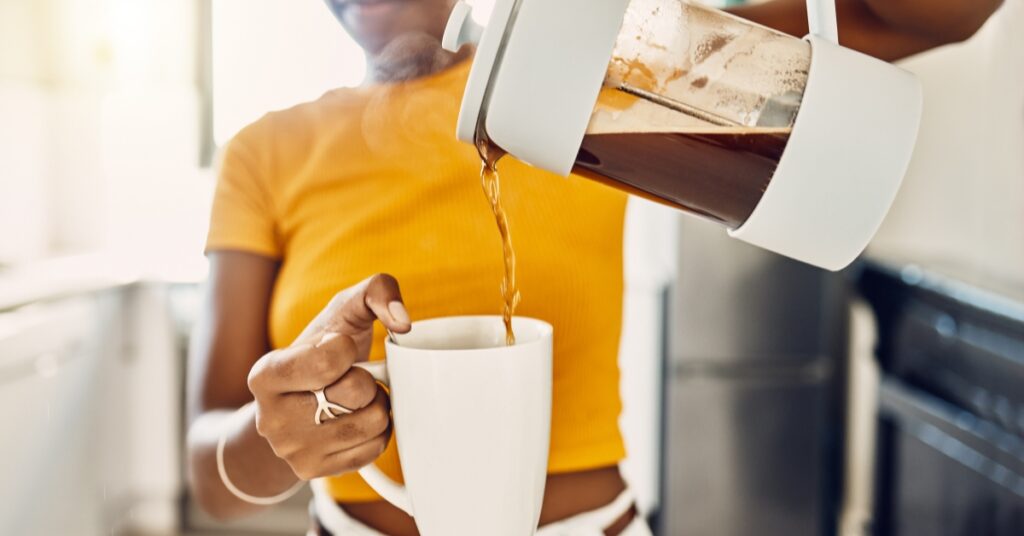
Preparing the Water
Heat your water in an electric kettle or on a stovetop until it reaches the desired water temperature. Avoid letting it come to a rolling boil. A gooseneck kettle can provide better-pouring control.
Adding Coffee
Place your coarse-ground coffee at the bottom of your French press. The aroma of the ground coffee is a prelude to the delicious coffee that’s about to be brewed.
Pour and Steep
Pour the hot water into the French press, ensuring all the coffee grounds are saturated. Let the coffee steep for about 4-6 minutes, which is the target time for a rich extraction of oils and flavors. You can give it a quick stir with a wooden spoon or bamboo paddle halfway through to ensure even extraction.
Plunging and Serving
After your brew time is complete, gently press down the plunger of your French press coffee maker. The built-in filter will separate the grounds from your brewed coffee. Pour your delicious coffee into mugs and enjoy while it’s coffee hot!
Common Mistakes to Avoid

- Using Cold Brew Coffee Techniques: The French press is an immersion brewing method, not to be confused with cold brew.
- Inconsistent Grinding: Regular ground coffee or pre-ground coffee beans can result in bitter coffee or leave sediments in your cup.
- Over-steeping: Respect the steep time. Over-extraction can lead to a bitter flavor.
Various Ways to Utilize Your French Press
A French press is an innovative and versatile piece of kitchen equipment that provides coffee drinkers with an easy way to brew a rich cup of java. But did you know that this ingenious device can also be utilized in a variety of other ways?
Beyond the simple brewing process, a French press offers many convenient solutions to all kinds of culinary tasks.
If you’re looking to enjoy some delicious loose-leaf tea, a French press can be used to carefully filter your favorite blend without compromising its potency. With a few extra steps, it can even froth milk just like an espresso machine would for luxury beverages like lattes and cappuccinos.
On top of that, it can even be used for filtering stocks or broths. To get the most out of your French press, it is necessary to clean it thoroughly after each use so that no residue remains.
Fixing Common French Press Problems
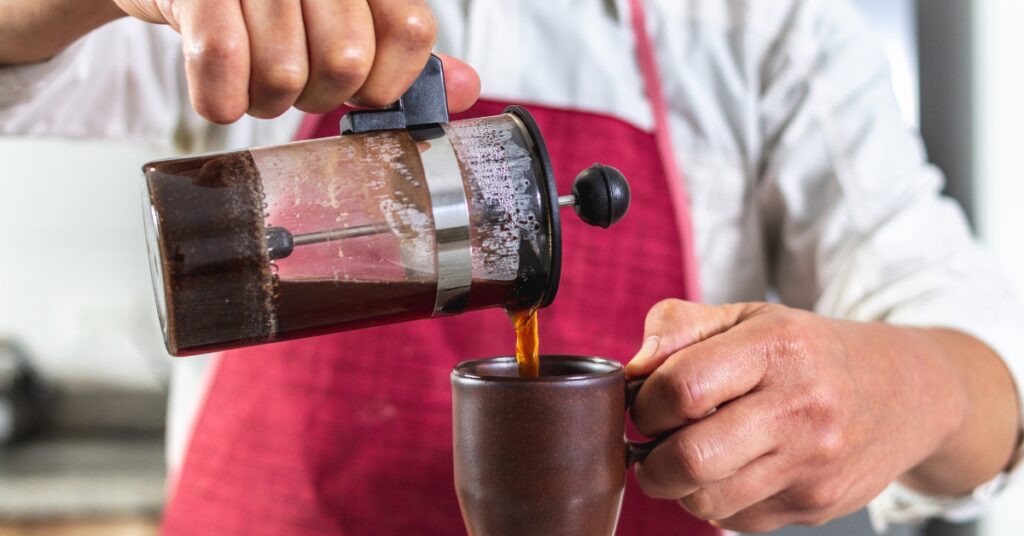
When troubleshooting French press problems, one of the most common things to consider is steep time. Timing can be the difference between an enjoyable cup of coffee and a bitter, over-extracted mess. If your coffee has an overly bitter flavor, check to see how long you let it steep in the French press.
Did you let it go for more than four minutes, or let the rest of the coffee sit after you poured out the first cup? Allowing too much time for extraction can lead to an undrinkable cup.
In addition to time, be sure to check the coarseness of your grind. If your coarse ground beans are too fine they may pass through your filter and make for a very gritty brew.
Note that if you’re using pre-ground coffee instead, it may have been sitting on the supermarket shelf long enough for it to lose some of its flavor potency, which could lead to weaker extractions, which could contribute towards poor taste.
Experiment with different grinder settings until you find a happy balance that works best with your specific equipment and preferences!
Final Thoughts: Diving Deeper into the World of Coffee
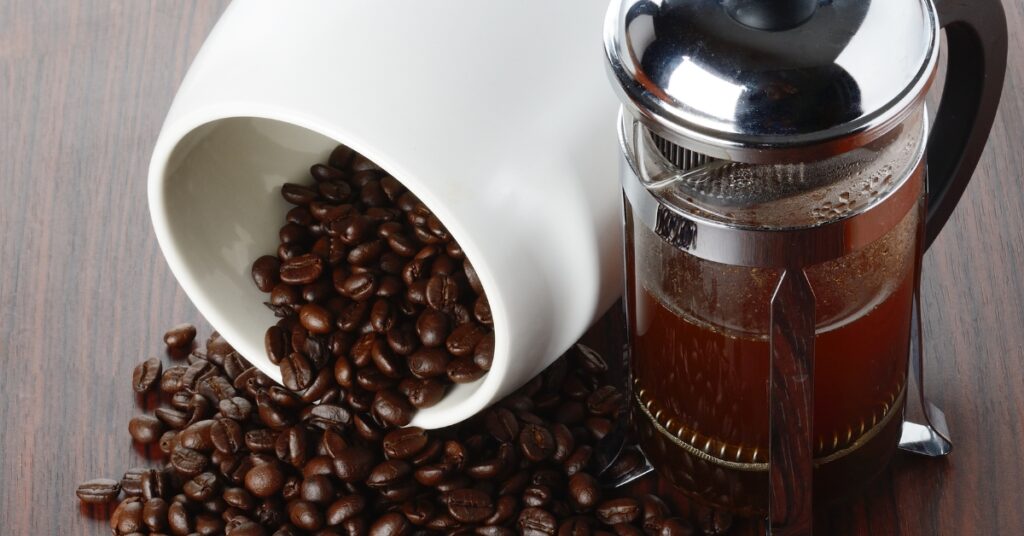
With your French press skills honed, the world of coffee awaits. From exploring the nuances between drip coffee and pour-over coffee to even daring the realms of espresso machines, your journey has only begun.
Relish every morning cup, every aroma, every flavor, and remember: in the world of coffee, there’s always something new to learn.
FAQs:
Yes, but each brewing method offers a unique taste. The French press offers a rich, full-bodied flavor compared to drip coffee makers and strong espresso from espresso machines.
Using boiling water can scald the coffee grounds. Aim for just below boiling, around 200°F, for the best extraction and flavor.
While you can, freshly ground coffee, especially from a burr grinder, offers the best flavor. Pre-ground coffee may not always have the coarse consistency ideal for a French press.
The French press offers immersion brewing, extracting flavors over a few minutes. In contrast, espresso machines force hot water through finely-ground beans quickly, and pour-over coffee allows water to drip through the coffee grounds. Each has its unique flavor profile.
Stick to a coarser grind. Ensure the French press filters are clean and in good shape.
While it’s better to grind beans fresh at home if you’re buying from a coffee shop, ask for a coarser grind suitable for a French press.
Adjust the steeping time. If it’s too strong, reduce the time, and if it’s too weak, let it steep a bit longer. Also, ensure you’re using the right coffee-to-water ratio.

